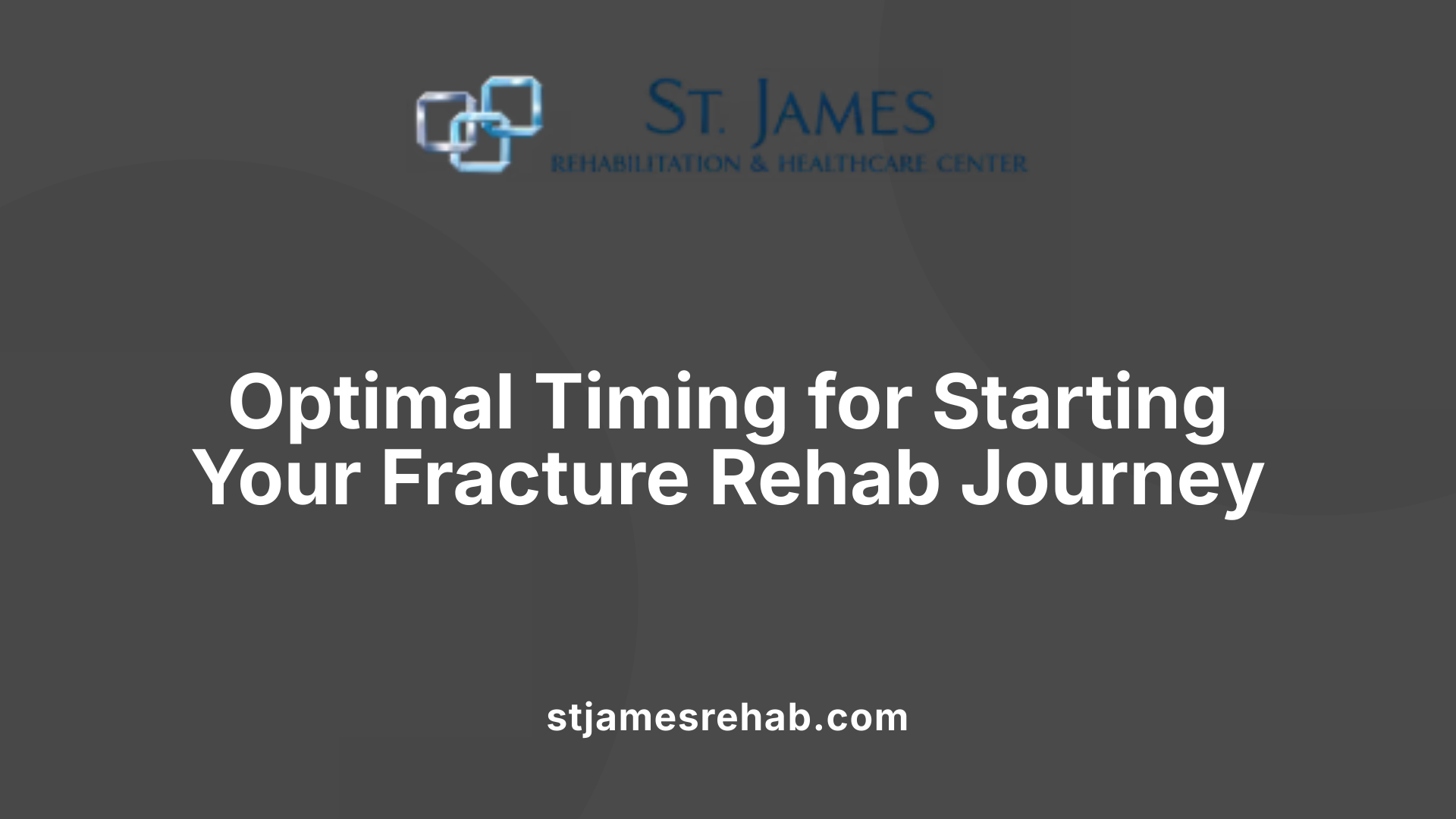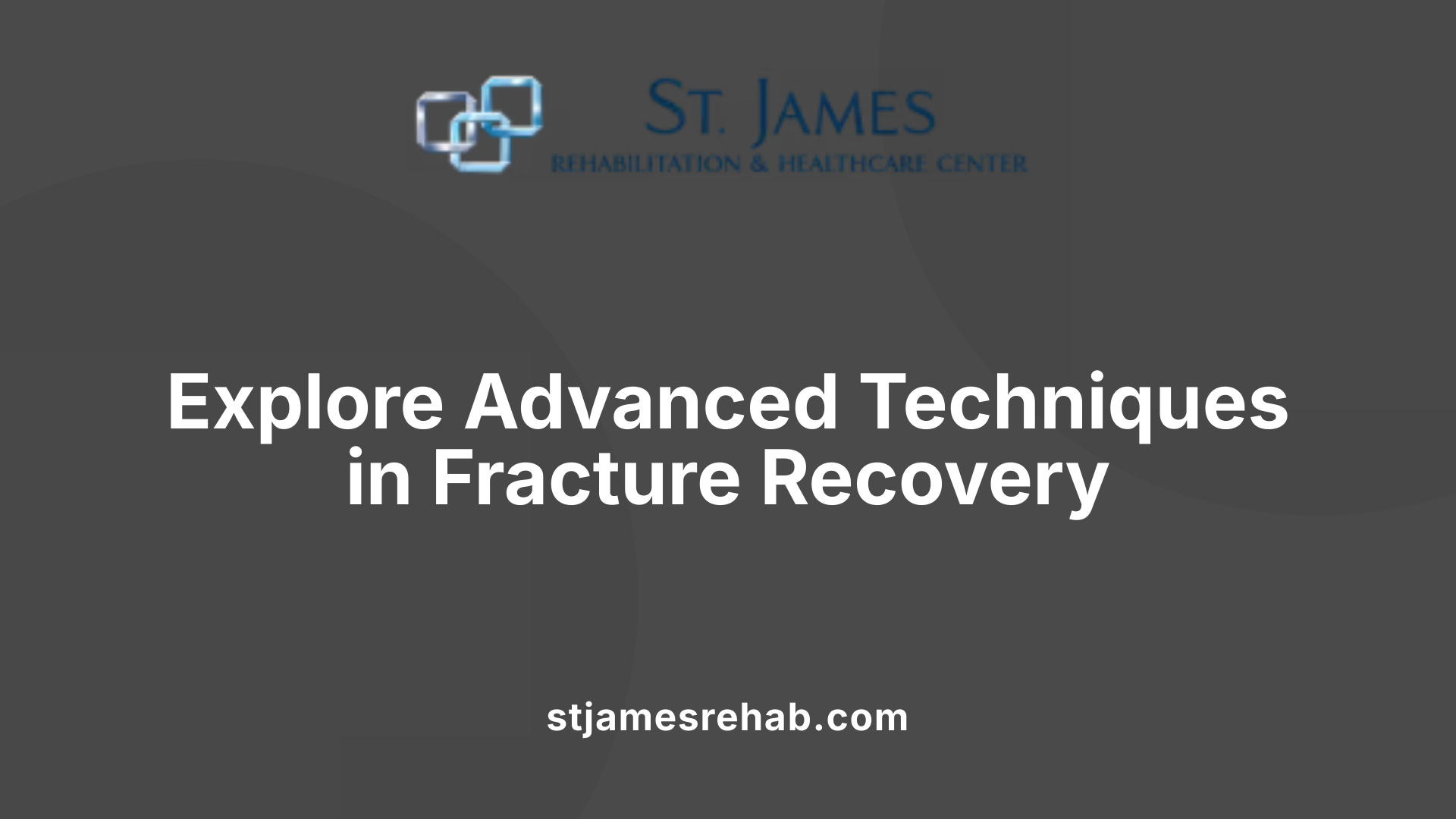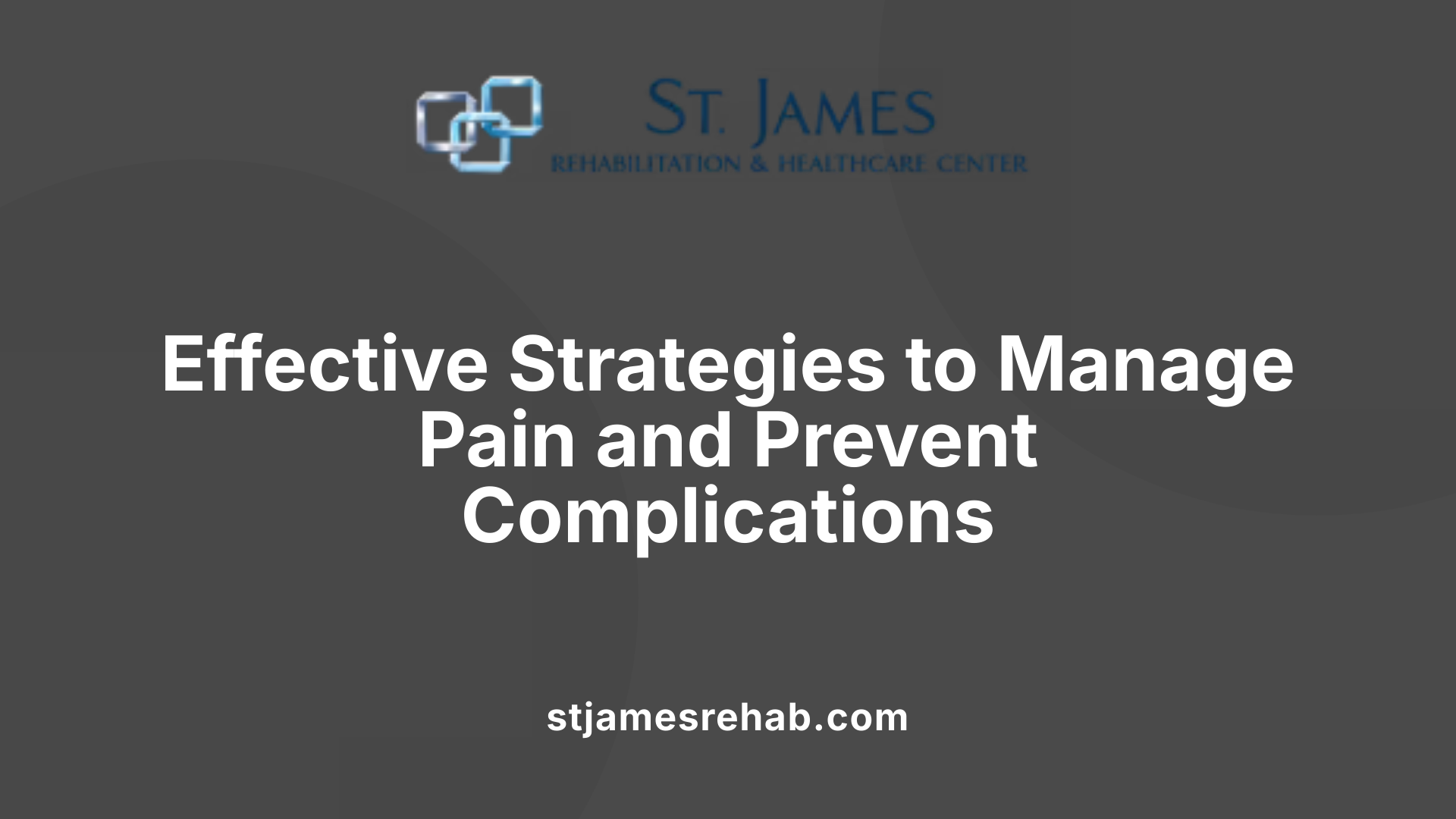How Physical Therapy Supports Recovery After a Broken Bone
Maximizing Healing: The Crucial Role of Physical Therapy After Fractures

Understanding the Vital Role of Physiotherapy in Bone Recovery
Recovering from a broken bone involves more than just immobilization; it requires a comprehensive rehabilitation approach. Physical therapy is a cornerstone in the healing process, promoting tissue repair, restoring mobility, and preventing complications. This article explores how physical therapy supports recovery from fractures, detailing techniques, stages, and goals involved in facilitating a safe and effective return to normal life.
The Role of Physiotherapy in Post-Fracture Rehabilitation
What is the role of physiotherapy in post-fracture rehabilitation?
Physiotherapy is essential after a fracture because it actively helps the body recover and regain full function. Its main goal is to promote early movement and mobilization, which are vital for restoring joint flexibility and muscle strength.
Once the fracture is stabilized—either through immobilization with casts or following surgery—physiotherapists assess the patient's mobility, pain levels, and overall movement capabilities. These evaluations guide personalized treatment plans tailored to the specific type and location of the fracture.
A range of therapeutic techniques are employed during treatment. Joint mobilisation and massage help improve tissue flexibility and reduce stiffness. Modalities like ultrasound and electrical stimulation facilitate tissue repair, decrease pain, and reduce swelling.
Preventing complications such as joint stiffness, muscle contractures, and muscle atrophy is a critical part of physiotherapy. Early intervention keeps the tissues healthy, supports blood flow, and encourages proper healing. Special exercises and manual therapy support tissue healing and enhance the stability of the injured area.
Through comprehensive assessment and targeted interventions, physiotherapy not only speeds up recovery but also ensures that patients regain their strength, mobility, and independence. It plays a vital role in returning individuals to their daily routines and preventing future injuries.
Techniques used in post-fracture physiotherapy
Physiotherapists utilize a variety of strategies to aid healing:
| Technique | Purpose | Details |
|---|---|---|
| Joint Mobilisation | Improve joint range of motion | Gentle manipulations to reduce stiffness and enhance tissue flexibility |
| Massage | Reduce scar tissue and muscle tension | Hands-on techniques to increase circulation and promote tissue repair |
| Ultrasound | Facilitate tissue healing | Use of sound waves to decrease inflammation and promote regeneration |
| Electrical Stimulation | Manage pain and promote muscle activation | Devices that deliver electrical impulses to stimulate muscles and nerves |
| Ice/Heat Therapy | Reduce swelling and pain | Modalities applied based on phase of healing; ice for inflammation, heat for stiffness |
Preventative aspects of physiotherapy
Preventing long-term issues is a core goal of physiotherapy.
- Stiffness and contractures: Early mobilization prevents joints from becoming stiff.
- Muscle atrophy: Strengthening exercises maintain muscle mass.
- Blood clots: Movement encourages healthy blood flow.
- Functional mobility: Rehabilitation exercises restore normal walking, lifting, and task performance.
Supporting tissue healing and stability
Physical therapy works hand-in-hand with natural tissue repair processes. Gentle exercises improve blood circulation, delivering oxygen and nutrients vital for healing.
Manual therapy, scar mobilization, and modalities like electrical stimulation help maintain tissue health. The therapy aims to rebuild muscle strength, improve balance, and enhance joint stability.
Gradually, patients progress from passive movements to active exercises that bear load, supporting the bone's transition from healing to full functional use.
| Stage of Rehabilitation | Focus | Techniques |
|---|---|---|
| Initial (Immobilization Period) | Maintain circulation, prevent stiffness | Gentle passive movements, compression, elevation |
| Intermediate (Reconditioning) | Restore range of motion, strength | Active exercises, manual therapy, modalities |
| Advanced (Return to Function) | Functional mobility, balance | Weight-bearing exercises, coordination activities |
Successful recovery from a fracture depends on early intervention, targeted therapies, and patient adherence. Continual assessment ensures progress, and treatment plans are adjusted to optimize healing and reduce the risk of long-term disability.
Stages and Timing of Physical Therapy After a Fracture

When should physical therapy be started after a fracture?
Physical therapy generally begins after the initial phase of fracture treatment, which involves immobilization with casts, splints, or braces to allow the bone to heal properly. Once the fracture’s stabilization is confirmed—often after cast removal or post-surgical stabilization—patients can safely start physical therapy. Early intervention is advantageous because it can help prevent joint stiffness, muscle atrophy, and poor tissue healing.
In most cases, physical therapy is initiated within a few weeks of injury, depending on the severity and location of the fracture. For example, wrist or forearm fractures may see therapy start around 4-6 weeks post-injury, while hip fractures or more complex cases may require a longer immobilization period before therapy begins.
However, some aspects of therapy, like gentle movements or specific exercises, may commence during immobilization, especially if prescribed by a healthcare professional. This early approach aims to maintain tissue health and circulation around the injury site, preventing stiffness and aiding in the healing process.
The timing must be carefully coordinated by healthcare providers, including orthopedic specialists and physical therapists. They assess readiness based on healing progress, pain levels, and mobility status. Overall, initiating physical therapy at the right time enhances recovery, speeds up the return to daily activities, and minimizes long-term functional issues.
Techniques and Treatments in Fracture Rehabilitation

How does physical therapy help with recovery after a fracture?
Physical therapy plays a vital role in the healing process after a bone fracture. It helps by promoting quicker tissue repair and restoring the injured area's strength, flexibility, and overall mobility. Through tailored interventions, physical therapists employ a variety of techniques designed to facilitate recovery.
A core aspect of fracture rehabilitation involves manual therapy, which includes soft tissue mobilization and joint mobilization. These hands-on procedures help improve tissue elasticity, reduce stiffness, and break down scar tissue, facilitating better joint movement and reducing pain.
Therapeutic exercises are another crucial element, aimed at reconditioning muscles weakened during immobilization. This includes resistance training and specific movements targeting the affected joints and muscles to rebuild strength and endurance.
Balance exercises and functional training are used to restore coordination, prevent falls, and ensure safe return to activities. These exercises gradually increase in intensity as healing progresses.
Modalities such as ultrasound, electrical stimulation, ice, and heat therapy are utilized to manage pain and inflammation. Ultrasound helps promote tissue healing, while electrical stimulation can reduce muscle atrophy and alleviate discomfort. Cold therapy decreases swelling, whereas heat can relax muscles and improve blood flow.
Scar management and tissue mobilization techniques are employed to address soft tissue restrictions and improve healing at the injury site. These approaches include massage and specialized mobilization techniques to enhance tissue flexibility.
Physical therapists create customized exercise programs based on the specific fracture site and the stage of healing. Early phases focus on gentle movements and avoiding stress on the bone, gradually progressing to weight-bearing activities and functional exercises.
Assistive devices such as crutches, splints, and braces are frequently used alongside therapy. Therapists guide patients in their proper use, ensuring protected and effective movement during recovery.
Regular assessments and tailored interventions help monitor progress and adapt treatment plans. This personalized approach ensures optimal healing, reduces risk of complications, and prepares patients to safely resume daily routines.
In summary, physical therapy after a fracture harnesses a combination of manual techniques, therapeutic exercises, modalities, and assistive devices to accelerate healing, reduce pain, improve function, and prevent future mobility issues. It is a comprehensive approach that supports the body's natural healing process and helps patients regain independence more quickly and safely.
Goals and Benefits of Physical Therapy During Fracture Healing
What is the role of physiotherapy in post-fracture rehabilitation?
Physiotherapy is vital to the recovery process after a bone fracture. Its primary goal is to promote early movement, which plays a significant role in restoring mobility and function. By encouraging gentle exercises and movement, physiotherapists help prevent long-term complications like joint stiffness, muscle atrophy, and blood clots.
Assessment is the first step in physiotherapy. Physical therapists evaluate the range of motion, pain levels, gait, flexibility, swelling, and overall mobility. These evaluations allow them to tailor personalized treatment routines suitable for each patient's specific injury and stage of healing.
Various therapeutic techniques are employed to support healing and recovery. Joint mobilization and manual therapy help reduce stiffness and improve joint function. Massage techniques increase circulation, breaking up scar tissue and alleviating muscle tension.
Modalities such as ultrasound, heat or ice therapy, electrical stimulation, and shockwave therapy are used to manage pain, decrease swelling, and stimulate tissue repair.
Starting physiotherapy soon after injury stabilization—whether post-immobilization or post-surgery—can significantly accelerate healing. It helps regain strength, stability, and functional mobility, enabling patients to return to their normal routines.
Overall, physiotherapy supports tissue healing, enhances stability, and leads to better functional outcomes. It ensures the injured area heals correctly and reduces the likelihood of long-term issues, making it an indispensable part of comprehensive fracture management.
Pain Management and Prevention of Complications

How does physical therapy help with recovery after a fracture?
Physical therapy plays an essential role in fracture recovery by accelerating tissue healing and helping regain movement, strength, and flexibility in the injured area. Through a combination of manual therapy, targeted exercises, and the use of various modalities, it reduces pain and swelling, making mobility easier for the patient.
Early physical therapy intervention is crucial to prevent long-term issues such as joint stiffness, muscle atrophy, and chronic pain. These problems can slow down recovery and diminish overall function if not addressed promptly. The therapist assesses the patient’s condition and develops a tailored rehabilitation plan that incorporates manual techniques, exercises, and modalities like heat, cold, ultrasound, and electrical stimulation.
Modalities such as ice or cold therapy effectively decrease inflammation and numb painful areas, providing immediate relief. Heat therapy is used later in the recovery process to relax muscles and improve blood flow, aiding tissue repair. Electrical stimulation can be employed to reduce pain signals and promote muscle activity when movement is limited.
Managing swelling and inflammation is a primary focus during the initial phases of rehabilitation. Techniques like manual lymphatic drainage, compression, and elevation help control swelling, while modalities like ice therapy minimize inflammation. These methods not only decrease discomfort but also create an optimal environment for tissue regeneration.
Preventing complications such as joint stiffness involves gentle range-of-motion exercises that maintain joint flexibility without stressing the newly healed bone. Muscle atrophy is countered with exercises designed to gently activate and strengthen supporting muscles, preventing weakness and supporting overall stability.
Blood clots are a common concern, especially after immobilization or surgical procedures. Therapists often incorporate movement techniques and educate patients on safe activity progression to encourage circulation and reduce the risk of deep vein thrombosis.
Pain relief and symptom management incorporate strategic use of modalities, manual techniques, and patient education. Therapists teach patients safe movement patterns, assistive device use, and activity modifications to protect healing tissues while maximizing function.
Modalities employed for effective pain management include:
| Technique | Purpose | How it works |
|---|---|---|
| Ice therapy | Reduce swelling and numb pain | Decreases blood flow and inflammation, numbing the pain area |
| Heat therapy | Relax muscles and promote healing | Enhances blood circulation and tissue flexibility |
| Electrical stimulation | Block pain signals and stimulate muscles | Alters nerve activity to reduce pain and encourage muscle engagement |
| Manual therapy | Mobilize tissues and joints | Hands-on techniques like massage and joint mobilization to decrease stiffness |
| Ultrasound | Accelerate tissue repair | Uses sound waves to promote blood flow and tissue healing |
Throughout the rehabilitative journey, a combination of these techniques ensures a comprehensive approach to pain relief and complication prevention. The goal is to create a safe, effective recovery environment that allows patients to regain full function confidently.
Personalized therapy programs factored into the patient’s condition and progress help to optimize outcomes. Regular evaluations enable adjustments, ensuring the interventions remain effective and aligned with healing milestones.
By integrating these strategies, physical therapy not only alleviates pain but also minimizes the risk of long-term disabilities, laying a solid foundation for a complete and sustainable return to daily activities and athletic pursuits.
Educational Content and Lifestyle Strategies for Effective Recovery

Why is patient education crucial in fracture recovery?
Patients recovering from a broken bone benefit greatly from education about their injury, the healing process, and necessary activity modifications. Understanding the stages of healing, including the importance of immobilization and gradual reintroduction of movement, helps patients stay motivated and compliant with their treatment plan.
Physical therapists play a key role by instructing patients on safe movement techniques, proper use of assistive devices like crutches, braces, or canes, and strategies to avoid reinjury. Educating patients about recognizing signs of improper healing, such as increased pain, swelling, or deformity, ensures timely medical attention and prevents complications.
How does proper nutrition support fracture healing?
Nutrition significantly impacts the healing process. Consuming foods rich in calcium, zinc, and magnesium helps strengthen new bone tissue. Dairy products, fish, leafy greens, and nuts are excellent sources of these minerals.
Vitamins C and D are vital for tissue repair and calcium absorption. Vitamin C, found in citrus fruits and vegetables, promotes collagen formation essential for bone matrix, while Vitamin D, obtained through sunlight exposure and fortified foods, aids calcium uptake.
A well-rounded diet with adequate calories and protein supports increased metabolic demands during healing, reducing fatigue and promoting faster recovery. Sometimes, supplements or vitamin infusions containing Vitamin C and Quercetin may be recommended to reduce inflammation and encourage tissue proliferation.
Using supports and assistive devices safely
Supportive devices such as crutches, splints, braces, and orthopedic supports help protect the injured area and promote correct alignment. Proper fitting and usage prevent unnecessary strain and facilitate mobility.
Physical therapists assess and teach correct application of these supports to enhance safety during daily activities. As healing progresses, patients learn to transition from partial to full weight-bearing and eventually to normal activities.
How to move safely and progressively increase activity?
Early mobility is encouraged to prevent stiffness and muscle atrophy. Gentle range of motion exercises, often guided by a physical therapist, are introduced once stabilization is confirmed.
Progression involves staged exercises: beginning with passive movements, then active-assisted, and eventually weight-bearing and strengthening activities. Techniques such as slow walking, pool exercises, and low-impact aerobic activities support safe rehabilitation.
Patients are advised to listen to their bodies, avoid pain during activity, and follow personalized timelines recommended by healthcare professionals. This gradual approach reduces the risk of re-injury and ensures optimal healing.
What strategies help prevent future fractures?
Preventing future fractures includes lifestyle and environment modifications. Ensuring adequate intake of bone-building nutrients, maintaining a balanced diet, and engaging in weight-bearing and muscle-strengthening exercises enhance bone density.
Lifestyle changes like quitting smoking, limiting alcohol intake, and managing chronic health conditions such as osteoporosis reduce fracture risk.
Home safety assessments—installing grab bars, removing trip hazards, improving lighting—help prevent falls, especially in older adults.
Educational programs emphasizing balance training, proper footwear, and safe movement techniques further support injury prevention.
| Aspect | Key Points | Additional Details |
|---|---|---|
| Patient Education | Understand healing stages | Recognize signs of complications |
| Nutrition | Focus on calcium, zinc, magnesium | Vitamin C and D for tissue repair |
| Support Devices | Proper fitting essential | Transition as healing progresses |
| Safe Movement | Start with gentle exercises | Gradually increase intensity |
| Future Prevention | Enhance bone strength | Fall risk reduction, home safety |
Incorporating these strategies during rehabilitation promotes more effective recovery and helps minimize the risk of future fractures, supporting a safe return to normal activities.
Supporting Long-Term Recovery and Maintaining Bone Health
Physical therapy is an indispensable part of the fracture healing journey, addressing not only immediate recovery needs but also enhancing long-term functional health. Comprehensive rehabilitation strategies help to restore motion, rebuild strength, and prevent future injuries. When combined with proper nutrition, patient education, and medical follow-up, physical therapy offers a pathway to optimal healing, enabling patients to regain independence and confidence in movement. Consistent adherence to tailored therapy programs and lifestyle adjustments ensures the best possible outcomes, emphasizing that recovery after a broken bone is a gradual process rooted in multidisciplinary support.
References
- Physical Therapy After Broken Bone - Ventura Orthopedics
- What to Expect From Physical Therapy After a Fracture
- Physical Therapy for Fractures: Recovery Guide - La Clinica SC
- From Fractures to Full Recovery: The Role of Physical Therapy
- Can Physical Therapy Help You Recover From a Fracture?
- Healing and Strengthening Techniques for Fracture Recovery
- Can Physical Therapy Help After a Broken Bone?
- Physical Therapy for Fracture Rehabilitation: Symptoms, Types, and ...






